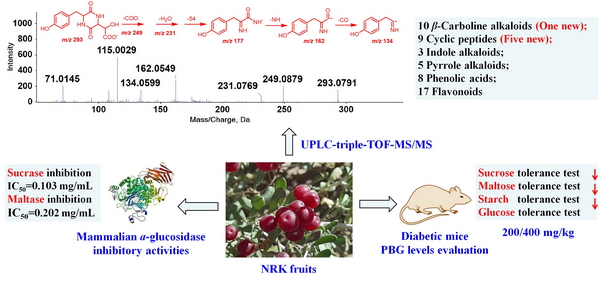Extract of Silphium perfoliatum L.improve lipid accumulation in NAFLD mice by regulating AMPK/FXR signaling pathway

March 21, 2024 Globally, the incidence rate and number of patients with nonalcoholic fatty liver disease are increasing, which has become one of the greatest threats to human health. However, there is still no effective therapy and ...
Characterization of alkaloids and phenolics in Nitraria roborowskii Kom. fruit by UHPLC-triple-TOF-MS/MS and its sucrase and maltase inhibitory effects

March 05, 2024 In this study, its chemical constituents (52) including 10 β-carboline alkaloids, nine cyclic peptides, three indole alkaloids, five pyrrole alkaloids, eight phenolic acids and 17 flavonoids were identified tentative...
Trophic relationships between protists and bacteria and fungi drive the biogeography of rhizosphere soil microbial community and impact plant physiological and ecological functions

January 25, 2024 Rhizosphere microorganisms play a vital role in enhancing plant health, productivity, and the accumulation of secondary metabolites. Currently, there is a limited understanding of the ecological processes that control...
Geographically associated endophytic fungi contribute to the tropane alkaloids accumulation of Anisodus tanguticus

January 18, 2024 Anisodus tanguticus is a valuable plant for extracting tropane alkaloids. However, themechanisms by which plant microbiome mediate the accumulation of tropane alkaloids in Anisodus tanguticus are still not well unders...
A core root bacteria contribute to plant growth and anisodine accumulation of Anisodus tanguticus

January 18, 2024 Although it is well recognized that core root microorganisms contribute to plant health and productivity, little is known about their role to the accumulation of secondary metabolites. The roots of Anisodus tanguticus...
